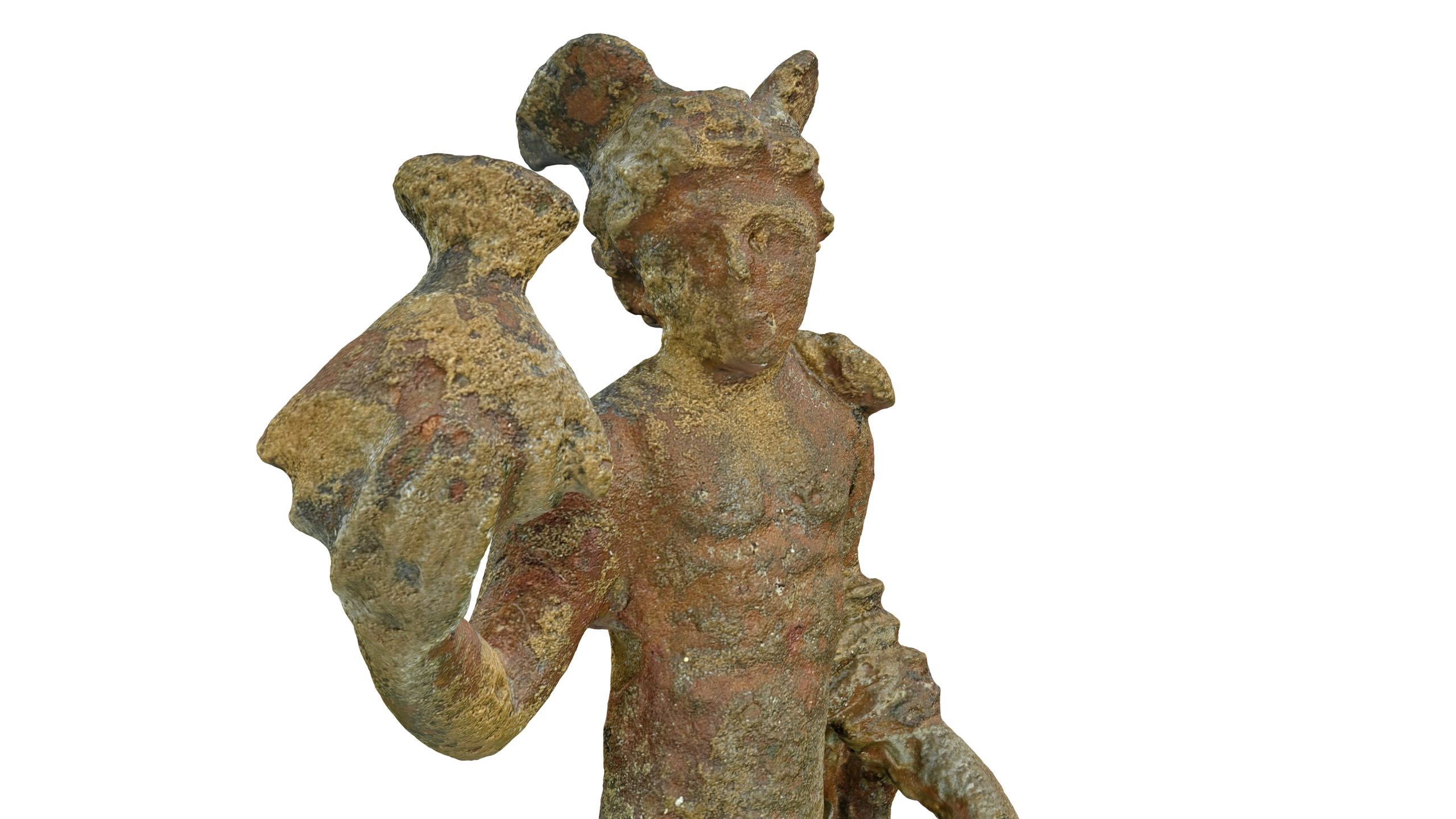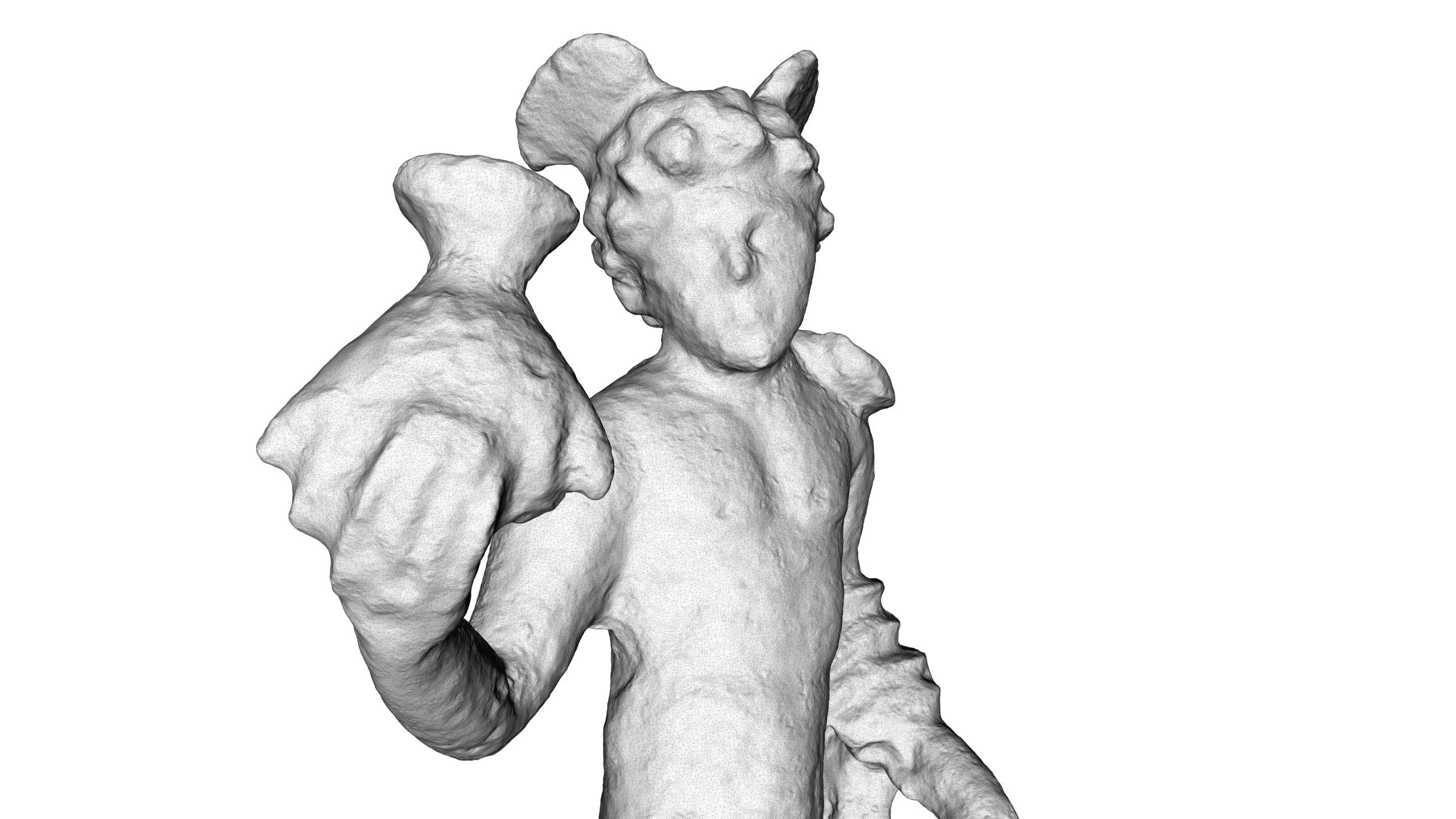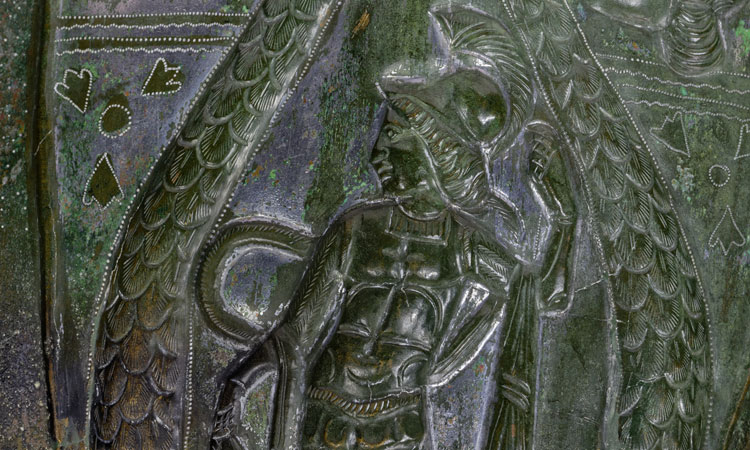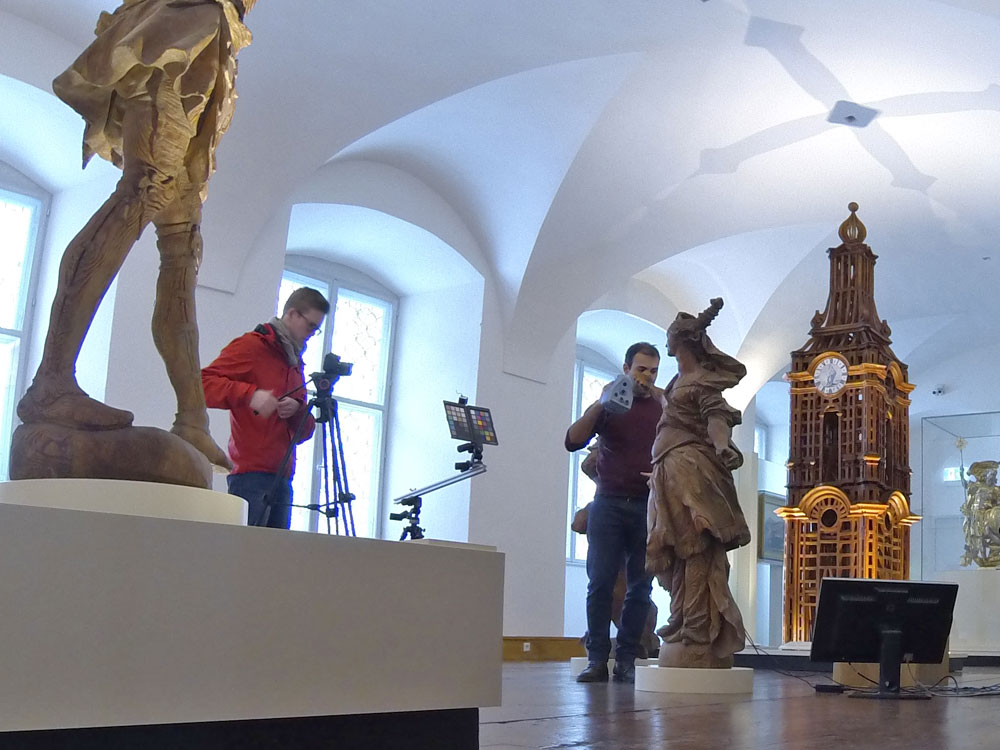Object Scanning
For the 3D digitization of smaller, very detailed objects or as a supplement to 3D laser scanning images, we use both structured light 3D scanning and photogrammetry.
With this approach we produce 3D recordings with extreme accuracies.
Archaeological finds interactively 3D digitized


“Mercury” statuette with burn marks, height without base 9,2cm – Historisches Museum Regensburg
Archaeological finds recorded three-dimensionally!
Visit the website about “3D digitized interactive archaeological findings” (currently only in German language):
Archaeological finds
High-resolution, photorealistic 3D models are easily calculated from the 3D scans, which can be used as the basis for a wide range of applications. These include in particular:
- digitization and damage mapping on 3D models
- reproductions, e.g. 3D print or CNC-model
- 3D visualizations and multimedia applications
- target-performance comparison to reference models
- highly accurate digital as-built documentation
3D Digitization of Museum Pieces
High-resolution 3D digitization is particularly suitable for the following objects:
- archaeological finds and artefacts
- sculpture, statues or figures
- structural or archaeological ornamentation
- Rapid Prototyping applications
- very small objects
3D scans of museum pieces are often the basis for planning restoration or replication.
Procedure – quick and mobile
There is great demand for a cost-effective and high-resolution 3D digitization method for museum pieces. Geometry and surface texture are the most important aspects of 3D data acquisition. The digital 3D model can then be for further processed for multimedia projects such as animations or museum applications, as well as for replication. The delivery takes place in the usual standard formats.
For particularly valuable pieces, object surveying is carried out on site at the customer’s location. We transport our equipment in a few flight cases and can be set up in a short amount of time. Alternatively, figures, finds or objects of any kind can also be sent to our 3D inventory. The surveying usually takes place in combination with several surveying methods – e.g. object scanning and photogrammetry. All this combined data is then fused during the data processing; the result is a high-resolution, digital 3D model.

